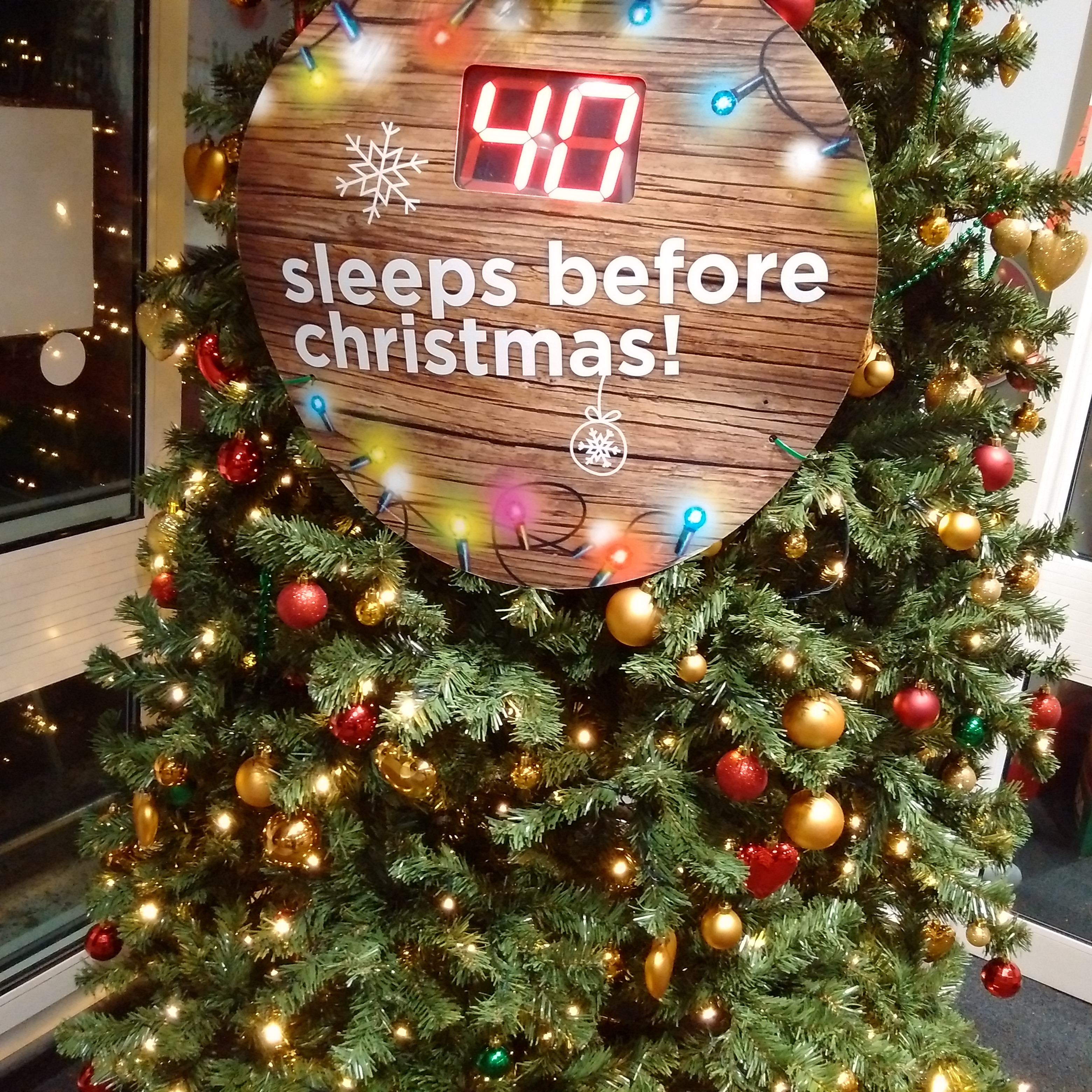Contents
Articles
2025
- Google Play Protect is now the custom DPC gatekeeper, and everyone is a threat by default
- 12 deliveries of AE-mas (What shipped in Android Enterprise in 2025)
- The 12 AE requests of Christmas (2025 Edition)
- RCS Archival and you: clearing up the misconceptions
- Device Trust from Android Enterprise: What it is and how it works (hands-on)
- Android developer verification: what this means for consumers and enterprise
- AMAPI finally supports direct APK installation, this is how it works
- The Android Management API doesn't support pulling managed properties (config) from app tracks. Here's how to work around it
- Hands-on with CVE-2025-22442, a work profile sideloading vulnerability affecting most Android devices today
- AAB support for private apps in the managed Google Play iFrame is coming, take a first look here
- What's new (so far) for enterprise in Android 16
2024
- Android 15: What's new for enterprise?
- How Goto's acquisition of Miradore is eroding a once-promising MDM solution
- Google Play Protect no longer sends sideloaded applications for scanning on enterprise-managed devices
- Mobile Pros is moving to Discord
- Avoid another CrowdStrike takedown: Two approaches to replacing Windows
- Introducing MANAGED SETTINGS
- I'm joining NinjaOne
- Samsung announces Knox SDK restrictions for Android 15
- What's new (so far) for enterprise in Android 15
- Google quietly introduces new quotas for unvalidated AMAPI use
- What is Play Auto Install (PAI) in Android and how does it work?
- AMAPI publicly adds support for DPC migration
- How do Android devices become certified?
2023
- Mute @channel & @here notifications in Slack
- A guide to raising better support requests
- Ask Jason: How should we manage security and/or OS updates for our devices?
- Pixel 8 series launches with 7 years of software support
- Android's work profile behaviour has been reverted in 14 beta 5.3
- Fairphone raises the bar with commitment to Android updates
- Product files: The DoorDash T8
- Android's work profile gets a major upgrade in 14
- Google's inactive account policy may not impact Android Enterprise customers
- Product files: Alternative form factors and power solutions
- What's new in Android 14 for enterprise
- Introducing Micro Mobility
- Android Enterprise: A refresher
2022
- What I'd like to see from Android Enterprise in 2023
- Thoughts on Android 12's password complexity changes
- Google Play target API requirements & impact on enterprise applications
- Sunsetting Discuss comment platform
- Google publishes differences between Android and Android Go
- Android Go & EMM support
- Relaunching bayton.org
- AER dropped the 3/5 year update mandate with Android 11, where are we now?
- I made a bet with Google (and lost)
2020
- Product files: Building Android devices
- Google announce big changes to zero-touch
- VMware announces end of support for Device Admin
- Google launch the Android Enterprise Help Community
- Watch: An Android Enterprise discussion with Hypergate
- Listen again: BM podcast #144 - Jason Bayton & Russ Mohr talk Android!
- Google's Android Management API will soon support COPE
- Android Enterprise in 11: Google reduces visibility and control with COPE to bolster privacy.
- The decade that redefined Android in the enterprise
2019
- Why Intune doesn't support Android Enterprise COPE
- VMware WS1 UEM 1908 supports Android Enterprise enrolments on closed networks and AOSP devices
- The Bayton 2019 Android Enterprise experience survey
- Android Enterprise Partner Summit 2019 highlights
- The Huawei ban and Enterprise: what now?
- Dabbling with Android Enterprise in Q beta 3
- Why I moved from Google WiFi to Netgear Orbi
- I'm joining Social Mobile as Director of Android Innovation
- Android Enterprise in Q/10: features and clarity on DA deprecation
- MWC 2019: Mid-range devices excel, 5G everything, form-factors galore and Android Enterprise
- UEM tools managing Android-powered cars
- Joining the Android Enterprise Experts community
- February was an interesting month for OEMConfig
- Google launch Android Enterprise Recommended for Managed Service Providers
- Migrating from Windows 10 Mobile? Here's why you should consider Android
- AER expands: Android Enterprise Recommended for EMMs
- What I'd like to see from Android Enterprise in 2019
2018
- My top Android apps in 2018
- Year in review: 2018
- MobileIron Cloud R58 supports Android Enterprise fully managed devices with work profiles
- Hands on with the Huawei Mate 20 Pro
- Workspace ONE UEM 1810 introduces support for Android Enterprise fully managed devices with work profiles
- G Suite no longer prevents Android data leakage by default
- Live: Huawei Mate series launch
- How to sideload the Digital Wellbeing beta on Pie
- How to manually update the Nokia 7 Plus to Android Pie
- Hands on with the BQ Aquaris X2 Pro
- Hands on with Sony OEMConfig
- The state of Android Enterprise in 2018
- BYOD & Privacy: Don’t settle for legacy Android management in 2018
- Connecting two Synologies via SSH using public and private key authentication
- How to update Rsync on Mac OS Mojave and High Sierra
- Intune gains support for Android Enterprise COSU deployments
- Android Enterprise Recommended: HMD Global launch the Nokia 3.1 and Nokia 5.1
- Android Enterprise Partner Summit 2018 highlights
- Live: MobileIron LIVE! 2018
- Android Enterprise first: AirWatch 9.4 lands with a new name and focus
- Live: Android Enterprise Partner Summit 2018
- Samsung, Oreo and an inconsistent Android Enterprise UX
- MobileIron launch Android Enterprise work profiles on fully managed devices
- Android P demonstrates Google's focus on the enterprise
- An introduction to managed Google Play
- MWC 2018: Android One, Oreo Go, Android Enterprise Recommended & Android Enterprise
- Enterprise ready: Google launch Android Enterprise Recommended
2017
- Year in review: 2017
- Google is deprecating device admin in favour of Android Enterprise
- Hands on with the Sony Xperia XZ1 Compact
- Moto C Plus giveaway
- The state of Android Enterprise in 2017
- Samsung launched a Note 8 for enterprise
- MobileIron officially supports Android Enterprise QR code provisioning
- Android zero-touch enrolment has landed
- MobileIron unofficially supports QR provisioning for Android Enterprise work-managed devices, this is how I found it
- Hands on with the Nokia 3
- Experimenting with clustering and data replication in Nextcloud with MariaDB Galera and SyncThing
- Introducing documentation on bayton.org
- Goodbye Alexa, Hey Google: Hands on with the Google Home
- Restricting access to Exchange ActiveSync
- What is Mobile Device Management?
- 8 tips for a successful EMM deployment
- Long-term update: the fitlet-RM, a fanless industrial mini PC by Compulab
- First look: the FreedomPop V7
- Vault7 and the CIA: This is why we need EMM
- What is Android Enterprise (Android for Work) and why is it used?
- Introducing night mode on bayton.org
- What is iOS Supervision and why is it used?
- Hands on with the Galaxy TabPro S
- Introducing Nextcloud demo servers
- Part 4 - Project Obsidian: Obsidian is dead, long live Obsidian
2016
- My top Android apps 2016
- Hands on with the Linx 12V64
- Wandera review 2016: 2 years on
- Deploying MobileIron 9.1+ on KVM
- Hands on with the Nextcloud Box
- How a promoted tweet landed me on Finnish national news
- Using RWG Mobile for simple, cross-device centralised voicemail
- Part 3 – Project Obsidian: A change, data migration day 1 and build day 2
- Hands on: fitlet-RM, a fanless industrial mini PC by Compulab
- Part 2 - Project Obsidian: Build day 1
- Part 1 - Project Obsidian: Objectives & parts list
- Part 0 - Project Obsidian: Low power NAS & container server
- 5 Android apps improving my Chromebook experience
- First look: Android apps on ChromeOS
- Competition: Win 3 months of free VPS/Container hosting - Closed!
- ElasticHosts review
- ElasticHosts: Cloud Storage vs Folders, what's the difference?
- Adding bash completion to LXD
- Android N: First look & hands-on
- Springs.io - Container hosting at container prices
- Apple vs the FBI: This is why we need MDM
- Miradore Online MDM: Expanding management with subscriptions
- Lenovo Yoga 300 (11IBY) hard drive upgrade
- I bought a Lenovo Yoga 300, this is why I'm sending it back
- Restricting access to Exchange ActiveSync
- Switching to HTTPS on WordPress
2015
2014
- Is CYOD the answer to the BYOD headache?
- BYOD Management: Yes, we can wipe your phone
- A fortnight with Android Wear: LG G Watch review
- First look: Miradore Online free MDM
- Hands on: A weekend with Google Glass
- A month with Wandera Mobile Gateway
- Final thoughts: Dell Venue Pro 11 (Atom)
- Thoughts on BYOD
- Will 2014 bring better battery life?
- My year in review: Bayton.org
- The best purchase I've ever made? A Moto G for my father
2013
2012
- My Top Android Apps 12/12
- The Nexus 7 saga: Resolved
- Recycling Caps Lock into something useful - Ubuntu (12.04)
- The Nexus 7 saga continues
- From Wows to Woes: Why I won't be recommending a Nexus7 any time soon.
- Nexus7: What you need to know
- Why I disabled dlvr.it links on Facebook
- HTC Sense: Changing the lockscreen icons from within ADW
2011
- Push your Google+ posts to Twitter and Facebook
- Using multiple accounts with Google.
- The "Wn-R48" (Windows on the Cr-48)
- Want a Google+ invite?
- Publishing to external sources from Google+
- Dell Streak review. The Phone/Tablet Hybrid
- BlueInput: The Bluetooth HID driver Google forgot to include
- Pushing Buzz to Twitter with dlvr.it
- Managing your social outreach with dlvr.it
- When Awe met Some. The Cr-48 and Gnome3.
- Living with Google's Cr-48 and the cloud.
- Downtime 23-25/04/2011
- Are you practising "safe surfing"?
- The Virtualbox bug: "Cannot access the kernel driver" in Windows
- Putting tech into perspective
2010
- Have a Google Buzz Christmas
- Root a G1 running Android 1.6 without recovery!
- Windows 7 display issues on old Dell desktops
- Google added the Apps flexibility we've been waiting for!
- Part I: My 3 step program for moving to Google Apps
- Downloading torrents
- Completing the Buzz experience for Google Maps Mobile
- Quicktip: Trial Google Apps
- Quicktip: Save internet images fast
- Turn your desktop 3D!
- Part III - Device not compatible - Skype on 3
- Swype not compatible? ShapeWriter!
- Don't wait, get Swype now!
- HideIP VPN. Finally!
- Google enables Wave for Apps domains
- Aspire One touch screen
- Streamline XP into Ubuntu
- Edit a PDF with Zamzar
- Google offering Gmail addresses in the UK
- Google Wave: Revolutionising blogs!
- Hexxeh's Google Chrome OS builds
- Update: Buzz on Windows Mobile
- Alternatives to Internet Explorer
- Wordress 3.0 is coming!
- Skype for WM alternatives
- Browsing on a (data) budget? Opera!
- Buzz on unsupported mobiles
- Buzz on your desktop
- What's all the Buzz?
- Part II: Device not compatible - Skype on 3
- Part I - Device not compatible - Skype on 3
- Dreamscene on Windows 7
- Free Skype with 3? There's a catch..
Change log
Hands on with the BlackBerry Passport
Contents
BlackBerry have been in the news a lot recently with the announcement of their first ever Android device – the BlackBerry Priv. Although I’d love to get my hands on one (shameless request) I’m not here to talk about the Priv, rather its larger, square-er brother the Passport.
Now I appreciate the Passport has been on the market for over a year, but given they’ve recently announced the Passport Silver Edition I figured a window of opportunity has re-opened and now is as good a time as any to pop some thoughts down about their self-proclaimed king of productivity.
I’ve been using the Passport for about 2 months, picking it up as a temp while my Nexus 6 undergoes a warranty repair. It’s been a device that interested me from the moment it launched due to its odd form factor and physical keyboard (I love a physical keyboard). Owing to it running BBOS 10.3.x with the ability to run Android apps, I figured it wouldn’t be too far behind the capabilities of my normal Android devices. I experienced a few hiccups with that, but I’ll talk more about it below. It’s been a good 2 years since I last reviewed a BlackBerry, I was excited to see how they’ve evolved.
Hardware
#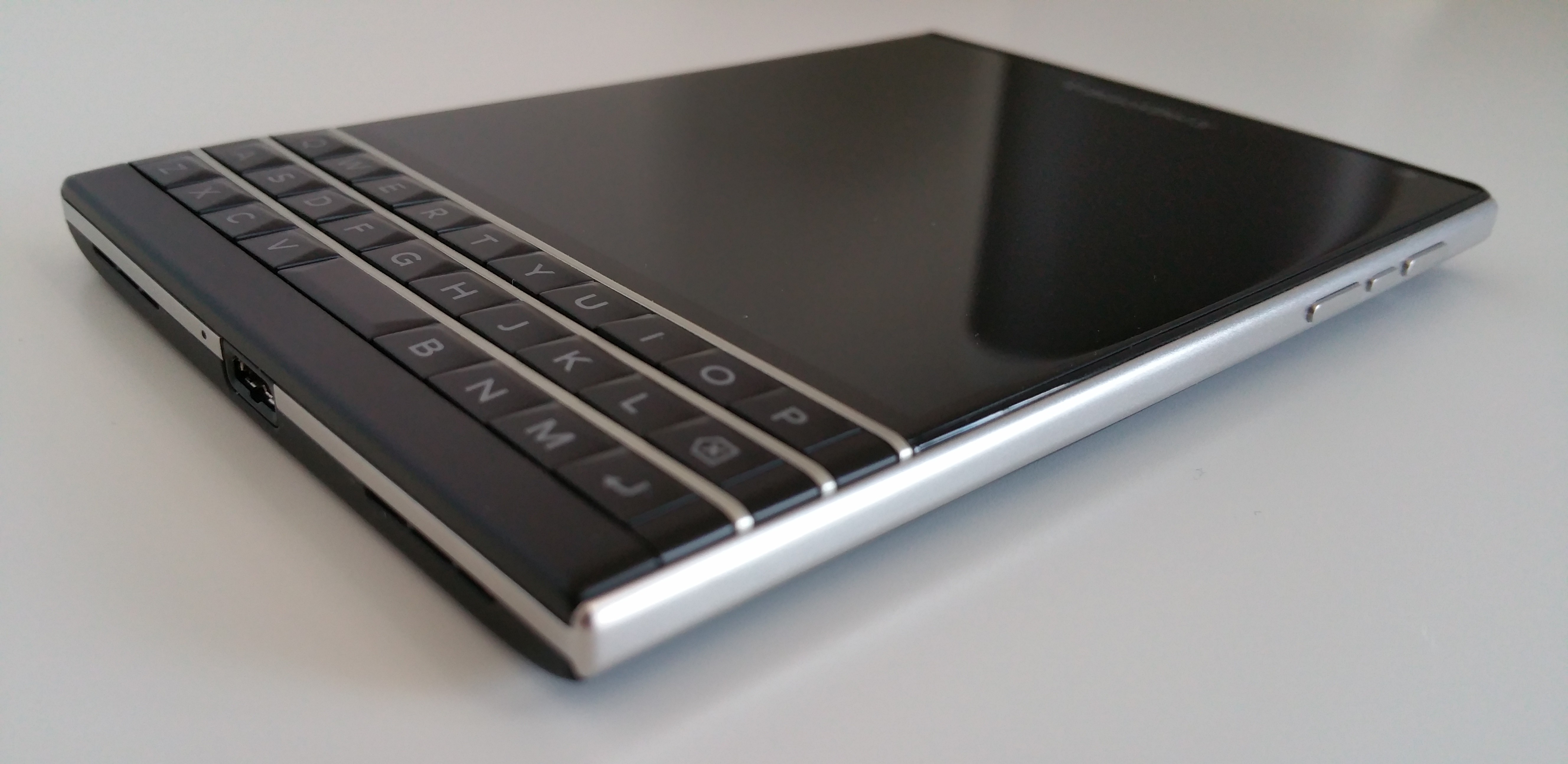
With a 4.5″ Square(!) 453 PPI display and a physical keyboard, the Passport is certainly eye-catching. On picking it up it was immediately apparent the device is well built with a reassuringly weighty feel and sturdy frame. The plastic back has some give but that can be forgiven due to the nature of the material and the fact it’s really barely noticeable (on this particular unit).
What is certainly different however is the feel in the hand; it felt rather large and slightly awkward. I say this as someone who’s been a big proponent of today’s phablets (since Samsung’s first Galaxy Note in fact) but of course it’s not like any other phone on the market due to that width.
At 90.3mm across it comfortably overshadows the smaller 83mm of the Nexus 6 and the 79.9mm iPhone 6s+. Although it doesn’t look like much on paper, in the hand and pocket it’s particularly noticeable – for the latter especially when sitting down.
The screen itself is bright and crisp, boasting a resolution of 1440 x 1440 and an aspect ratio of 1:1. The view is certainly unique among competitors currently on the market though I can’t say I was particularly excited by it, often wishing I could see a little more without scrolling all of the time.
The device isn’t completely square however, as the keyboard is another unique feature of the Passport sitting directly below the screen. It consists of three rows of keys, the spacebar sitting snugly, strangely, amongst the bottom row. The keyboard also acts as a touchpad, translating swipes into actions on the screen above which is a really nice feature. More on the keyboard later.
Beyond the unusual form factor and unique additions the spec is fairly on par with the competition:
- 32GB storage with microSD expansion
- 3GB RAM
- 13MP rear-facing camera featuring OIS and 1080p recording
- 2MP front-facing camera
- 3450mAh battery
On the right-hand side you’ll find the volume keys and BlackBerry Assistant button. The keys are sturdy, clicky and have a premium feel to them. On top there’s a power button on the right and a 3.5mm headphone jack on the left. On the bottom you’ll find the microUSB port for charging.
Flipping the phone over you’ll find a neat little access port for the microSD and SIM card.
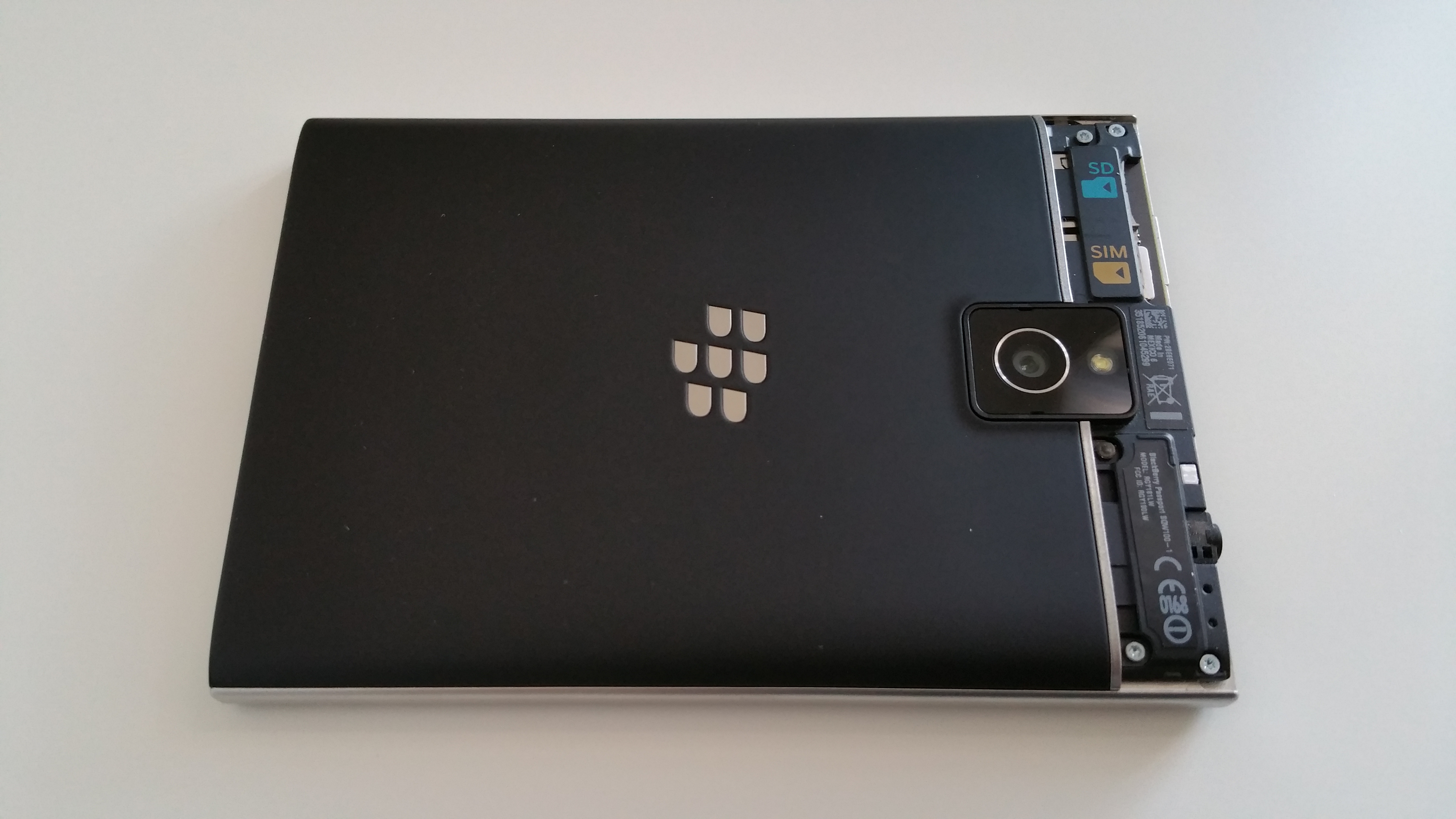
Software
#So as previously mentioned I’ve been itching to try the Android app integration with (and without) the Amazon Appstore. I last toyed with Android apps on 10.2.x and I’m not going to lie, it didn’t live up to my expectations. 10.3.x was supposed to change that and therefore put my app-anxiety (which I’m sure is absolutely a thing) at bay.
Android app integration
#Being an Android user since the debut of the original G1 and a Google user long before that, I’ve come to heavily rely on my Google services; Gmail, Youtube, G+, Maps, Music.. so on. As such one of the first tasks I gave myself was to get them working with the Passport.
It sort of worked..
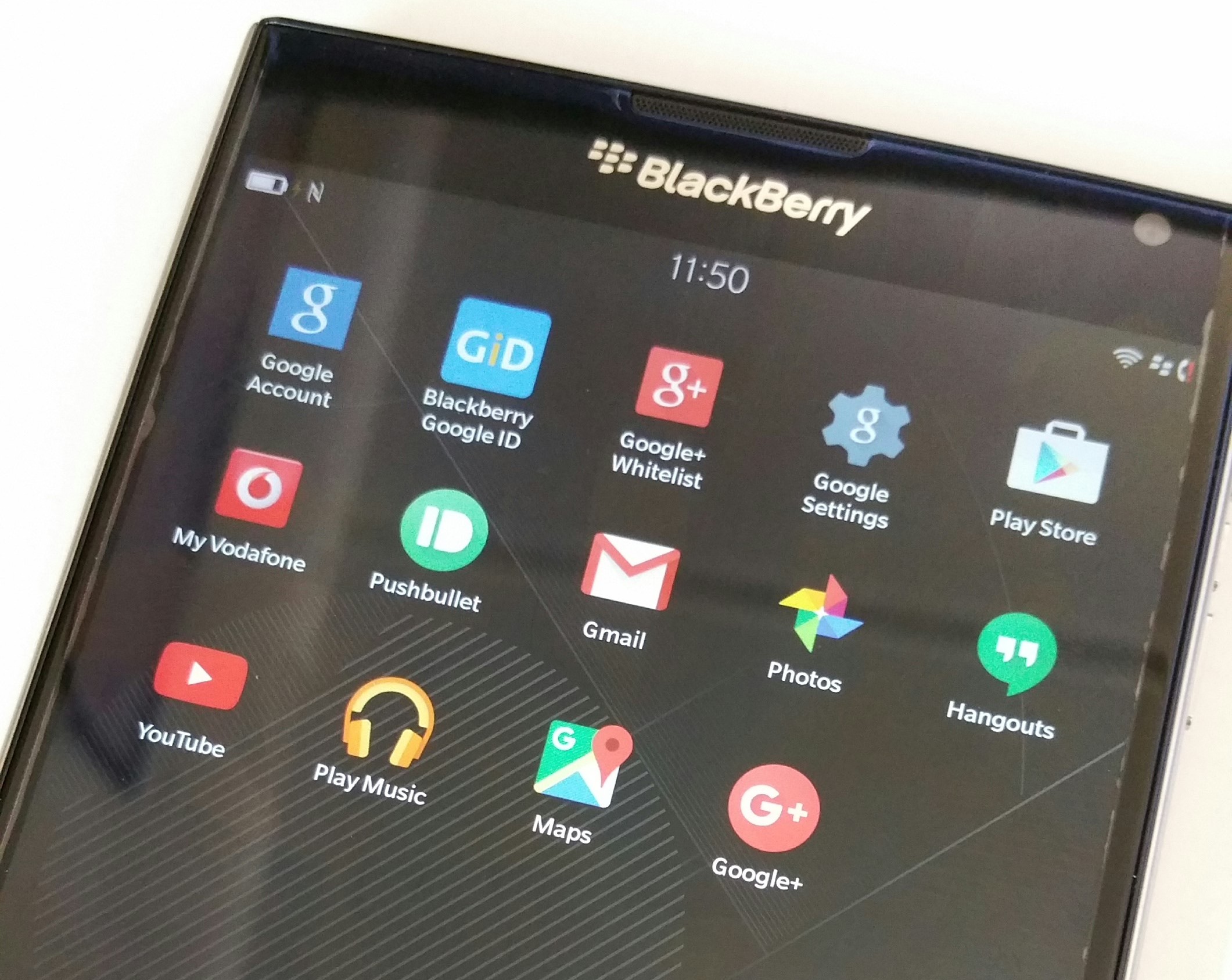
Youtube failed almost immediately, Maps eventually. Hangouts is too slow to be useful and Google+ regularly gives me Google Play Services errors. Still, Gmail, Photos and Music work and I’m managing OK with that (mostly because I have a work Note 4, otherwise I’d have likely still been trying to get them all working).
There are posts on CrackBerry among other places that explain the process so I won’t go into it here. It isn’t too complex though and while things do fail, updates are frequent to help mitigate that.
I had more success with the Amazon Appstore and got a good few apps installed I was familiar with, but it in no way filled the void left by the absence of the Play Store – which I also got working temporarily, but ultimately failed due to the Play Services requirement of so many of the apps there and the need to manually patch them before installing.
I was also less than impressed by the Android notifications that are passed into the hub. They require first clicking on the alert, before being taken into the Android emulator itself which displays a black screen with a small alert dead-centre which then requires another tap before the notification is read.
Bugs
#With the Android plan somewhat scuppered, I tried to exert more effort towards BlackBerry’s software offering. Even in 10.3.x (and I’ll carry on referring it to 10.3.x throughout because I received an update within the first month) the software doesn’t feel completely polished; it’s a good deal better than the Z10 I reviewed all those years ago naturally, but I still saw glitches more frequently than I’d expect on a flagship, including:
- Calls going straight to voicemail, not ringing even once with good signal
- Backlight on the keyboard choosing not to illuminate until rebooted
- Hub notifications for alerts that don’t exist (especially email, I hunted for ages – that is, over a period of weeks – for something that ultimately wasn’t there)
- Stutter, slow responsiveness, glitches that all rectify when the device is bounced.
I’m sure it could be argued any of those could be due to trying to run Android apps, but then if the functionality is there (and installing APKs directly outside of Amazon is an option) shouldn’t the Passport have some form of management to prevent performance from degrading? Even so I’m not convinced that was the reason for the bugs I encountered, but I can’t think of anything else that would attribute towards it.
BlackBerry Apps
#Putting the glitches aside I quite enjoyed the centralised hub; that one location accessible from anywhere that allows creating and answering messages from various services. It’s definitely something I’d consider looking into when I return to Android, even though I’m certain the experience wouldn’t be quite as good with a 3rd party option (any you may know of, dear readers, please point out in the comments). The swipe up > right has become so natural to me that I tend to do it without thinking on all devices.
The task manager being front and centre on the homescreen was also useful. It managed to crawl up to about 8 applications that I frequented which naturally saved time vs scrolling through the app list constantly. I couldn’t figure out on what basis it decides which windows deserve to be large and which remain small as it seems random, often opting to prioritise things like the Device Monitor which I opened maybe once every few days (AKA reboot time) rather than say the browser which was open multiple times per day.
On the subject of the browser.. it needs work. It’s slow, a little uninspired, incredibly basic and I found a lot of the time websites weren’t sure what it was and opted for the desktop view. In the case of the latter it really didn’t matter about that 1:1 wide screen, I was scrolling horizontally regardless. One of the nicer features however was the auto-fullscreen when playing video, an annoyance with Chrome I find is having to tap play on an embedded video, then tap the fullscreen button. It’s undoubtedly a first world problem to have but I’m glad BlackBerry resolved it.
The Passport ships with a whole host of productivity apps preinstalled. Some, like the calendar and file manager are no-nonsense, functional applications. Others however, like Docs To Go, reinforce the productive nature of the phone. They could have easily adopted simple editors but opted for a well-known, cross-platform, feature-rich editing suite instead.
Camera
#Admittedly being a device aimed at productivity I didn’t spend much time using the camera. I wasn’t expecting great things from the 13MP snapper BlackBerry opted to use in the Passport and while the photos were better than expected, they certainly didn’t blow me away.
I found low-light photos to be grainy and difficult to focus, a familiar problem in the mobile industry though one that is improving more recently.
Here are a few samples:
BlackBerry tout 30 hours on a single charge and to their credit the Passport is possibly one of the best phones I’ve tested for battery life.
For example, I took the Passport off charge at 8am this morning. At 8pm the phone has lost 31%. Overnight the loss will be a negligible 5-15% (generally depending on if I leave the browser open when I turn the screen off, because the browser does draw power quite a bit more than I’d expect) and I’ll likely be looking at putting it back on charge sometime later in the evening tomorrow or even the morning after.
By contrast my Note 4 typically goes on charge daily; occasionally the next morning if I forget.
Keyboard
#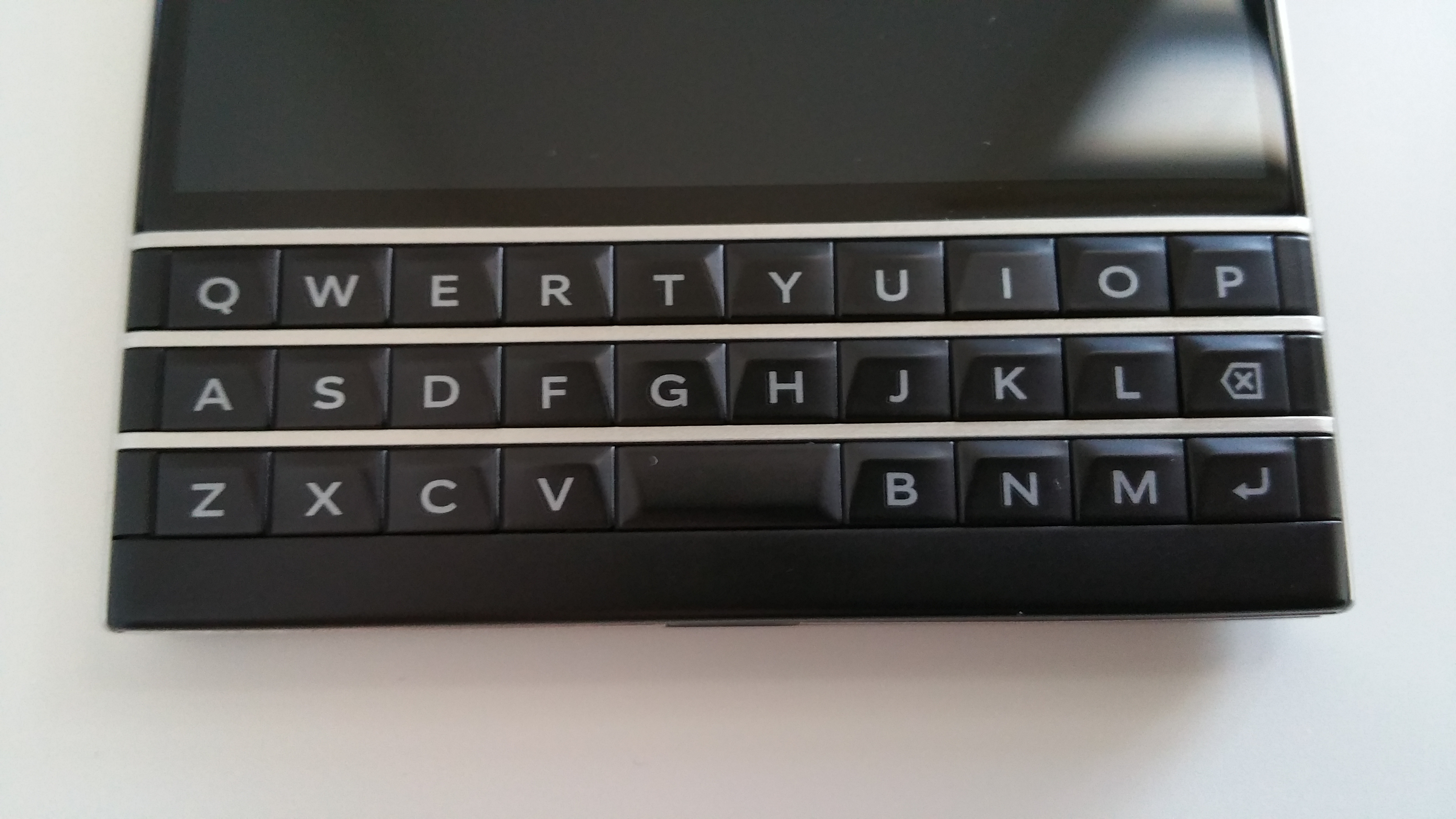
It would hardly be a BlackBerry review without dedicating a heading to the keyboard. Even moreso when said keyboard also acts as a trackpad!
I remember the BlackBerry keyboards of old; they were all pretty comparable with one another across the many models and one true identifying feature of any BlackBerry. I really, really liked those keyboards.
This one? Not so much.
To start with the biggest gripe, they’re missing at least one row of keys. Squashing the spacebar into the bottom row of the QWERTY layout was not a good idea; by doing so they’ve removed the symbols (instead putting them into an on-screen keyboard) the fn key (which gave quick access to numbers (also on-screen now) and other symbols not on a typical bottom row) and made it instantly less familiar and more difficult to become accustomed to.
Before switching over permanently to onscreen keyboards back in 2010 I had a HTC TyTN II (well documented here!) and briefly a T-mobile G1. Both had decent keyboards, the G1 to a lesser extent but due to having 5 (!) rows of keys was familiar and easy enough to type with. To this day I’m not as fast typing on soft keyboards as I was with physical keyboards (when you account for mistakes as well as speed) and I was expecting to relive my days of writing essays on phones without breaking a sweat with the Passport.
Nope.
As far as keyboards – virtual or physical – go, the Passport has the most awkward, difficult to use and annoying keyboard I’ve ever encountered. It’s one thing to have to hit a fn key to get a symbol or number, quite another to have to use a virtual addon on-screen to do the job. Adding another row of keys and making the keyboard a little more complicated (no less complicated than any other keyboard on the market I might add) wouldn’t make the phone much taller and would have improved the experience no end.
With that frustration out of the way…
The keyboard is backlit, as you’d expect. When the backlight worked it was bright and immensely useful in situations where there was an absence of light.
It is also touch-sensitive. An incredibly useful idea that meant scrolling through a webpage, moving the text cursor and other functions could all be done without touching the screen. I found myself using this a lot with the relatively small (height) screen as it really allowed me to use every last pixel of display without blocking content with my finger.
As a side note I’m very happy to see they’ve gone back with the “classic” BlackBerry keyboard in the Priv, upgraded also with touch capabilities.
Conclusion
#There were two main features of the Passport I found myself somewhat excited by: the physical keyboard and the extra wide “productive” display. Neither offered me any benefits over any other phone on the market today. The advantage of the extra width on the screen for excel documents and the like was far outweighed by the need to scroll far more frequently up and down documents and webpages. The keyboard leaves so very much to be desired.
Overall the Passport, although being probably the best BBOS10 device on the market, boasting flagship-specs and solid build, is let down by the awkward shape, poorly designed keyboard and a lacking/buggy OS; the latter being something that could’ve been overlooked if the Android app integration was more reliable.
I can see why reviews of this device have been so mixed online, it’s definitely not one for me.
Articles
2025
- Google Play Protect is now the custom DPC gatekeeper, and everyone is a threat by default
- 12 deliveries of AE-mas (What shipped in Android Enterprise in 2025)
- The 12 AE requests of Christmas (2025 Edition)
- RCS Archival and you: clearing up the misconceptions
- Device Trust from Android Enterprise: What it is and how it works (hands-on)
- Android developer verification: what this means for consumers and enterprise
- AMAPI finally supports direct APK installation, this is how it works
- The Android Management API doesn't support pulling managed properties (config) from app tracks. Here's how to work around it
- Hands-on with CVE-2025-22442, a work profile sideloading vulnerability affecting most Android devices today
- AAB support for private apps in the managed Google Play iFrame is coming, take a first look here
- What's new (so far) for enterprise in Android 16
2024
- Android 15: What's new for enterprise?
- How Goto's acquisition of Miradore is eroding a once-promising MDM solution
- Google Play Protect no longer sends sideloaded applications for scanning on enterprise-managed devices
- Mobile Pros is moving to Discord
- Avoid another CrowdStrike takedown: Two approaches to replacing Windows
- Introducing MANAGED SETTINGS
- I'm joining NinjaOne
- Samsung announces Knox SDK restrictions for Android 15
- What's new (so far) for enterprise in Android 15
- Google quietly introduces new quotas for unvalidated AMAPI use
- What is Play Auto Install (PAI) in Android and how does it work?
- AMAPI publicly adds support for DPC migration
- How do Android devices become certified?
2023
- Mute @channel & @here notifications in Slack
- A guide to raising better support requests
- Ask Jason: How should we manage security and/or OS updates for our devices?
- Pixel 8 series launches with 7 years of software support
- Android's work profile behaviour has been reverted in 14 beta 5.3
- Fairphone raises the bar with commitment to Android updates
- Product files: The DoorDash T8
- Android's work profile gets a major upgrade in 14
- Google's inactive account policy may not impact Android Enterprise customers
- Product files: Alternative form factors and power solutions
- What's new in Android 14 for enterprise
- Introducing Micro Mobility
- Android Enterprise: A refresher
2022
- What I'd like to see from Android Enterprise in 2023
- Thoughts on Android 12's password complexity changes
- Google Play target API requirements & impact on enterprise applications
- Sunsetting Discuss comment platform
- Google publishes differences between Android and Android Go
- Android Go & EMM support
- Relaunching bayton.org
- AER dropped the 3/5 year update mandate with Android 11, where are we now?
- I made a bet with Google (and lost)
2020
- Product files: Building Android devices
- Google announce big changes to zero-touch
- VMware announces end of support for Device Admin
- Google launch the Android Enterprise Help Community
- Watch: An Android Enterprise discussion with Hypergate
- Listen again: BM podcast #144 - Jason Bayton & Russ Mohr talk Android!
- Google's Android Management API will soon support COPE
- Android Enterprise in 11: Google reduces visibility and control with COPE to bolster privacy.
- The decade that redefined Android in the enterprise
2019
- Why Intune doesn't support Android Enterprise COPE
- VMware WS1 UEM 1908 supports Android Enterprise enrolments on closed networks and AOSP devices
- The Bayton 2019 Android Enterprise experience survey
- Android Enterprise Partner Summit 2019 highlights
- The Huawei ban and Enterprise: what now?
- Dabbling with Android Enterprise in Q beta 3
- Why I moved from Google WiFi to Netgear Orbi
- I'm joining Social Mobile as Director of Android Innovation
- Android Enterprise in Q/10: features and clarity on DA deprecation
- MWC 2019: Mid-range devices excel, 5G everything, form-factors galore and Android Enterprise
- UEM tools managing Android-powered cars
- Joining the Android Enterprise Experts community
- February was an interesting month for OEMConfig
- Google launch Android Enterprise Recommended for Managed Service Providers
- Migrating from Windows 10 Mobile? Here's why you should consider Android
- AER expands: Android Enterprise Recommended for EMMs
- What I'd like to see from Android Enterprise in 2019
2018
- My top Android apps in 2018
- Year in review: 2018
- MobileIron Cloud R58 supports Android Enterprise fully managed devices with work profiles
- Hands on with the Huawei Mate 20 Pro
- Workspace ONE UEM 1810 introduces support for Android Enterprise fully managed devices with work profiles
- G Suite no longer prevents Android data leakage by default
- Live: Huawei Mate series launch
- How to sideload the Digital Wellbeing beta on Pie
- How to manually update the Nokia 7 Plus to Android Pie
- Hands on with the BQ Aquaris X2 Pro
- Hands on with Sony OEMConfig
- The state of Android Enterprise in 2018
- BYOD & Privacy: Don’t settle for legacy Android management in 2018
- Connecting two Synologies via SSH using public and private key authentication
- How to update Rsync on Mac OS Mojave and High Sierra
- Intune gains support for Android Enterprise COSU deployments
- Android Enterprise Recommended: HMD Global launch the Nokia 3.1 and Nokia 5.1
- Android Enterprise Partner Summit 2018 highlights
- Live: MobileIron LIVE! 2018
- Android Enterprise first: AirWatch 9.4 lands with a new name and focus
- Live: Android Enterprise Partner Summit 2018
- Samsung, Oreo and an inconsistent Android Enterprise UX
- MobileIron launch Android Enterprise work profiles on fully managed devices
- Android P demonstrates Google's focus on the enterprise
- An introduction to managed Google Play
- MWC 2018: Android One, Oreo Go, Android Enterprise Recommended & Android Enterprise
- Enterprise ready: Google launch Android Enterprise Recommended
2017
- Year in review: 2017
- Google is deprecating device admin in favour of Android Enterprise
- Hands on with the Sony Xperia XZ1 Compact
- Moto C Plus giveaway
- The state of Android Enterprise in 2017
- Samsung launched a Note 8 for enterprise
- MobileIron officially supports Android Enterprise QR code provisioning
- Android zero-touch enrolment has landed
- MobileIron unofficially supports QR provisioning for Android Enterprise work-managed devices, this is how I found it
- Hands on with the Nokia 3
- Experimenting with clustering and data replication in Nextcloud with MariaDB Galera and SyncThing
- Introducing documentation on bayton.org
- Goodbye Alexa, Hey Google: Hands on with the Google Home
- Restricting access to Exchange ActiveSync
- What is Mobile Device Management?
- 8 tips for a successful EMM deployment
- Long-term update: the fitlet-RM, a fanless industrial mini PC by Compulab
- First look: the FreedomPop V7
- Vault7 and the CIA: This is why we need EMM
- What is Android Enterprise (Android for Work) and why is it used?
- Introducing night mode on bayton.org
- What is iOS Supervision and why is it used?
- Hands on with the Galaxy TabPro S
- Introducing Nextcloud demo servers
- Part 4 - Project Obsidian: Obsidian is dead, long live Obsidian
2016
- My top Android apps 2016
- Hands on with the Linx 12V64
- Wandera review 2016: 2 years on
- Deploying MobileIron 9.1+ on KVM
- Hands on with the Nextcloud Box
- How a promoted tweet landed me on Finnish national news
- Using RWG Mobile for simple, cross-device centralised voicemail
- Part 3 – Project Obsidian: A change, data migration day 1 and build day 2
- Hands on: fitlet-RM, a fanless industrial mini PC by Compulab
- Part 2 - Project Obsidian: Build day 1
- Part 1 - Project Obsidian: Objectives & parts list
- Part 0 - Project Obsidian: Low power NAS & container server
- 5 Android apps improving my Chromebook experience
- First look: Android apps on ChromeOS
- Competition: Win 3 months of free VPS/Container hosting - Closed!
- ElasticHosts review
- ElasticHosts: Cloud Storage vs Folders, what's the difference?
- Adding bash completion to LXD
- Android N: First look & hands-on
- Springs.io - Container hosting at container prices
- Apple vs the FBI: This is why we need MDM
- Miradore Online MDM: Expanding management with subscriptions
- Lenovo Yoga 300 (11IBY) hard drive upgrade
- I bought a Lenovo Yoga 300, this is why I'm sending it back
- Restricting access to Exchange ActiveSync
- Switching to HTTPS on WordPress
2015
2014
- Is CYOD the answer to the BYOD headache?
- BYOD Management: Yes, we can wipe your phone
- A fortnight with Android Wear: LG G Watch review
- First look: Miradore Online free MDM
- Hands on: A weekend with Google Glass
- A month with Wandera Mobile Gateway
- Final thoughts: Dell Venue Pro 11 (Atom)
- Thoughts on BYOD
- Will 2014 bring better battery life?
- My year in review: Bayton.org
- The best purchase I've ever made? A Moto G for my father
2013
2012
- My Top Android Apps 12/12
- The Nexus 7 saga: Resolved
- Recycling Caps Lock into something useful - Ubuntu (12.04)
- The Nexus 7 saga continues
- From Wows to Woes: Why I won't be recommending a Nexus7 any time soon.
- Nexus7: What you need to know
- Why I disabled dlvr.it links on Facebook
- HTC Sense: Changing the lockscreen icons from within ADW
2011
- Push your Google+ posts to Twitter and Facebook
- Using multiple accounts with Google.
- The "Wn-R48" (Windows on the Cr-48)
- Want a Google+ invite?
- Publishing to external sources from Google+
- Dell Streak review. The Phone/Tablet Hybrid
- BlueInput: The Bluetooth HID driver Google forgot to include
- Pushing Buzz to Twitter with dlvr.it
- Managing your social outreach with dlvr.it
- When Awe met Some. The Cr-48 and Gnome3.
- Living with Google's Cr-48 and the cloud.
- Downtime 23-25/04/2011
- Are you practising "safe surfing"?
- The Virtualbox bug: "Cannot access the kernel driver" in Windows
- Putting tech into perspective
2010
- Have a Google Buzz Christmas
- Root a G1 running Android 1.6 without recovery!
- Windows 7 display issues on old Dell desktops
- Google added the Apps flexibility we've been waiting for!
- Part I: My 3 step program for moving to Google Apps
- Downloading torrents
- Completing the Buzz experience for Google Maps Mobile
- Quicktip: Trial Google Apps
- Quicktip: Save internet images fast
- Turn your desktop 3D!
- Part III - Device not compatible - Skype on 3
- Swype not compatible? ShapeWriter!
- Don't wait, get Swype now!
- HideIP VPN. Finally!
- Google enables Wave for Apps domains
- Aspire One touch screen
- Streamline XP into Ubuntu
- Edit a PDF with Zamzar
- Google offering Gmail addresses in the UK
- Google Wave: Revolutionising blogs!
- Hexxeh's Google Chrome OS builds
- Update: Buzz on Windows Mobile
- Alternatives to Internet Explorer
- Wordress 3.0 is coming!
- Skype for WM alternatives
- Browsing on a (data) budget? Opera!
- Buzz on unsupported mobiles
- Buzz on your desktop
- What's all the Buzz?
- Part II: Device not compatible - Skype on 3
- Part I - Device not compatible - Skype on 3
- Dreamscene on Windows 7
- Free Skype with 3? There's a catch..


